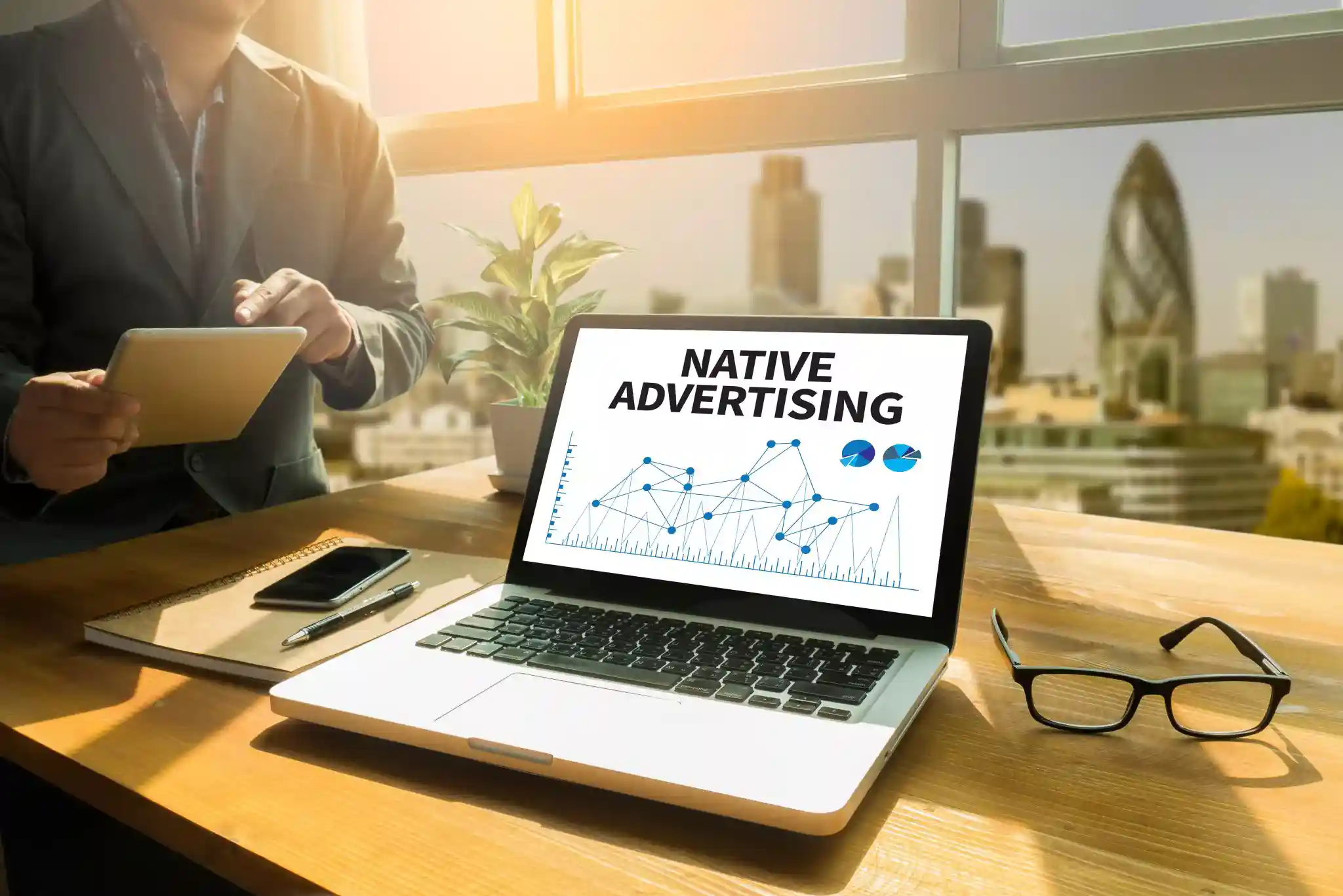Native advertising is where the lines between content and promotion blur, and marketing becomes an art form.
Native advertising continues to impress marketers as a perfect medium for branding, performance, and revenue optimization. That is why it is an ideal option for the publisher to expand their revenue.
According to insider intelligence, the US native ad spending will close in on $100 billion in 2023, which is 57% of total display ad spending in 2023. This impressive number is because of its potential to captivate audiences, which will increase demand for ad space and get high CPMs and yield for publishers.
However, what exactly is native advertising? And how can publishers leverage it? To find out, let’s gain a 360-degree perspective on native advertising examples.
Table of Contents
- Native Advertising: What Is It?
- Native Ads vs. Display Ads
- Native Vs. Display Ads: Which Is Better?
- Native Ad Examples: 7 of the Best Ones for Publishers
- Basic Types of Native Advertising
- Types of Native Ad Formats
- Native Advertising Benefits for Publishers
- Native Ads Best Practices for Effective Monetization
- Best Native Ad Networks for Publishers (2024)
- Run Native Ads for a Win-Win Situation
- FAQs
Native Advertising: What Is It?
Native advertising is a fusion of advertising and content, cleverly crafted to be compatible with the platform it occupies. Unlike conventional display ads that interrupt the user experience, native ads blend in with their surroundings, creating a less intrusive and more enticing appeal to consumers.
You’ll often encounter this advertising format within social media feeds, news articles, or recommended content sections, cleverly disguising itself as an integral part of the organic content experience.
Native Ads vs. Display Ads
Native ads match the look and feel of the content on the site. On the other hand, display ads stand out from the rest of the content. Display ads are popularly called Google Ads, and they come in different shapes and sizes, such as leaderboard (728×90), square (250×250), small square (200×200), rectangle (336×280), inline rectangle (300×250), skyscraper (120×600), etc.
Native ads are highly engaging and more suited for mobile phones with a higher CTR rate than display ads. According to Outbrain, the CTR of Native ads on the desktop is 0.38%, and mobile ads are 0.16%. The CTR of display ads is 0.05% on all devices. It is less than native ads, but they do have effective results on brand awareness and increase the purchase intent.
Also Read: Native vs. Display: What Is the Difference?
Native Vs. Display Ads: Which Is Better?
Today, ads fill the whole digital system; only 10% of people say they are not annoyed with display ads. Also, we can see 760 million downloads of ad-blocking software. Native advertising can reduce these disturbing numbers with a comfortable and non-obtrusive nature.
Native ads are replacing display ads with the growth of programmatic advertising. This doesn’t mean that display ads are out of the market. They have a fair share of the digital advertising market. Each type is popular for different intentions like Native ads to get high traffic and Display ads for audience retargeting.
Native Ad Examples: 7 of the Best Ones for Publishers
Native advertising has skyrocketed in popularity owing to its remarkable capacity to captivate audiences seamlessly. Through the adoption of a native approach, publishers can increase the views and clicks for their ads in a manner that veers away from being intrusive advertising and leans more towards an invaluable content piece. Here are the seven best examples of native advertising for publishers.
Mercedes “The Rise of Superhuman Ad” in the Washington Post
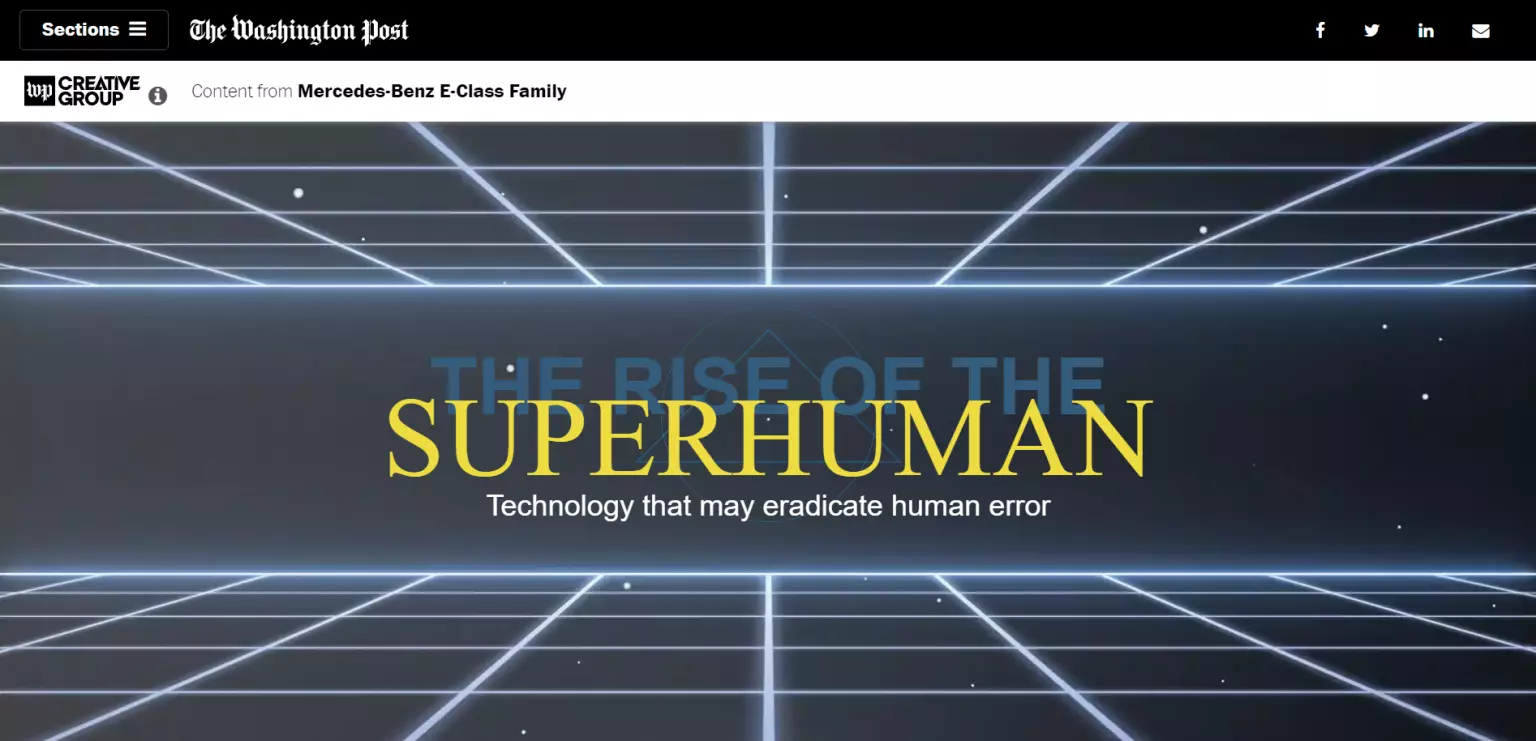
Mercedes’s native advertising strategy mixes innovation and creativity. This native advertising campaign is an example of smooth, clean content designed to engage the user. The ad is an immersive brand experience called “The Rise of the Superhuman” that integrates the new Intelligent Drive system.
There’s no reason other publishers can’t create similar innovative ad experiences. This ad creates a connection between the car and the cutting-edge excellence that establishes Mercedes as a company about more than just crafting cars.
This strategy is successful because Mercedes never tries to sell their audience anything. Instead, they rely on promoting their brand on a popular and one of the leading American news sites. The link between the Mercedes ad and the Washington Post is natural, which makes it easy for the reader to connect.
KPMG ad on Forbes

If you want a win-win situation, here’s the perfect native advertising example. A collaboration between KPMG and Forbes resulted in an interactive ad that benefits all businesses involved. KPMG’s ad campaign on Forbes is called “The Great Rewrite.” This native ad includes innovative content, videos, content recommendations about various sectors, and technologies that connect KPMG with the future of innovation.
This is a great example of a native campaign that, just like its title, is rewriting the rules of native in an ongoing, ever-growing, content-rich user experience. While this native ad doesn’t directly promote any KPMG services, it helps readers positively associate with the brand.
The best native ad examples are the kind that your audience knows they’re ads but are also so good that people interact with them anyway.
Visit Portugal native ad on Skyscanner.

The website Skyscanner lets people research and book travel options for their trips, including flights, hotels, and car hire. The Visit Portugal native ad appears on the homepage of the Skyscanner website so that everyone searching for travel options can see this ad and might consider booking a trip to Portugal.
This native includes a beautiful image and information about the country, the best cities to visit, travel guidelines, and restrictions that are very important for travelers. This native ad had a strong click-through rate (CTR) and boosted engagement on the Visit Portugal landing pages.
This is exactly the type of ad the audience expects on a travel booking site, Skyscanner, and the ad is a logical choice for Visit Portugal. The ad promotes the travel options while being visually appealing and sticking to the overall feel of Skyscanner – simple, engaging, and appealing.
Netflix Narcos + WSJ native ad example
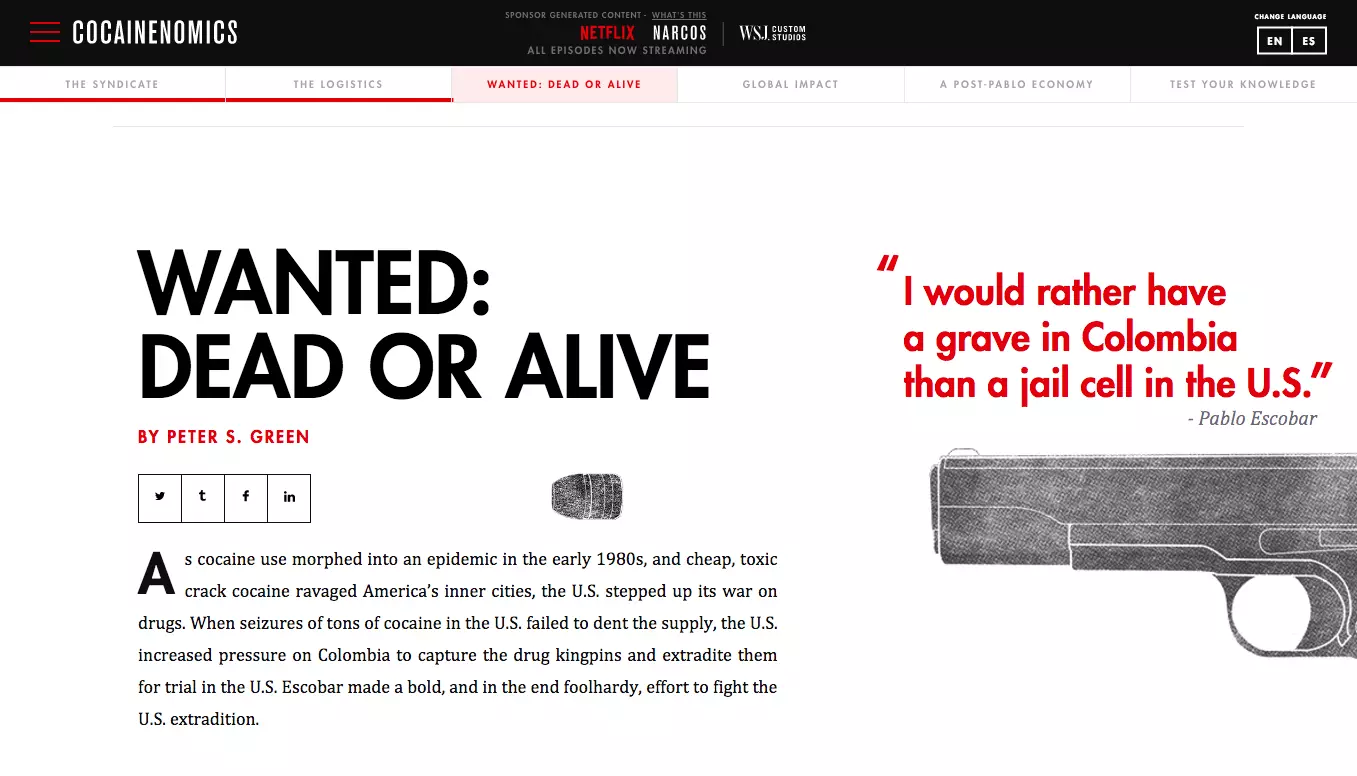
A great example of native advertising is the ingenious strategy employed by Netflix to promote their immensely successful show, Narcos (Cocainenomics). Instead of the traditional approach, they joined forces with the Wall Street Journal to create an interactive portal.
This captivating portal is an educational hub, providing information about the real-life characters and situations that inspired the show.
And that’s not all! At the end of the portal, dedicated fans can put their knowledge to the test with the “test your knowledge” section, comparing their expertise to the infamous Pablo Escobar himself.
Native ads on Google
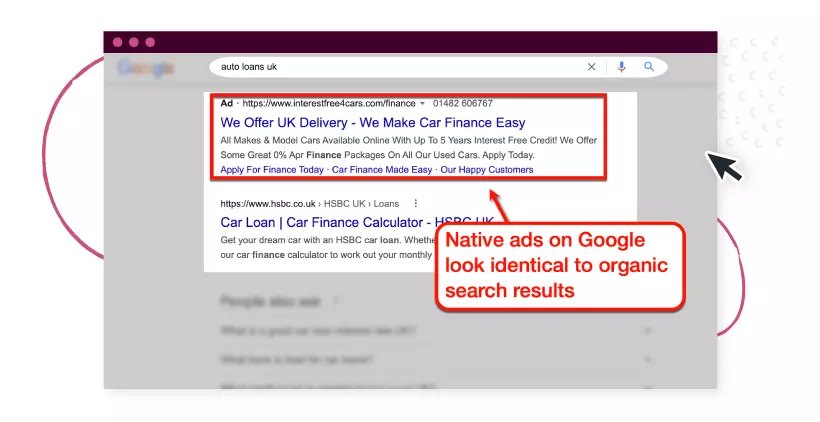
Native advertising can take various forms beyond content posts. Much like Amazon, Google has introduced native ads as part of its offerings. These ads are displayed above the organic search results and are indicated by a discreet “Ad” label, blending seamlessly with the search experience. Moreover, when users exhibit a shopping intent in their search queries, relevant ads are presented in a convenient carousel format, allowing for effortless scrolling and exploration.
Amazon: the best example of native ads
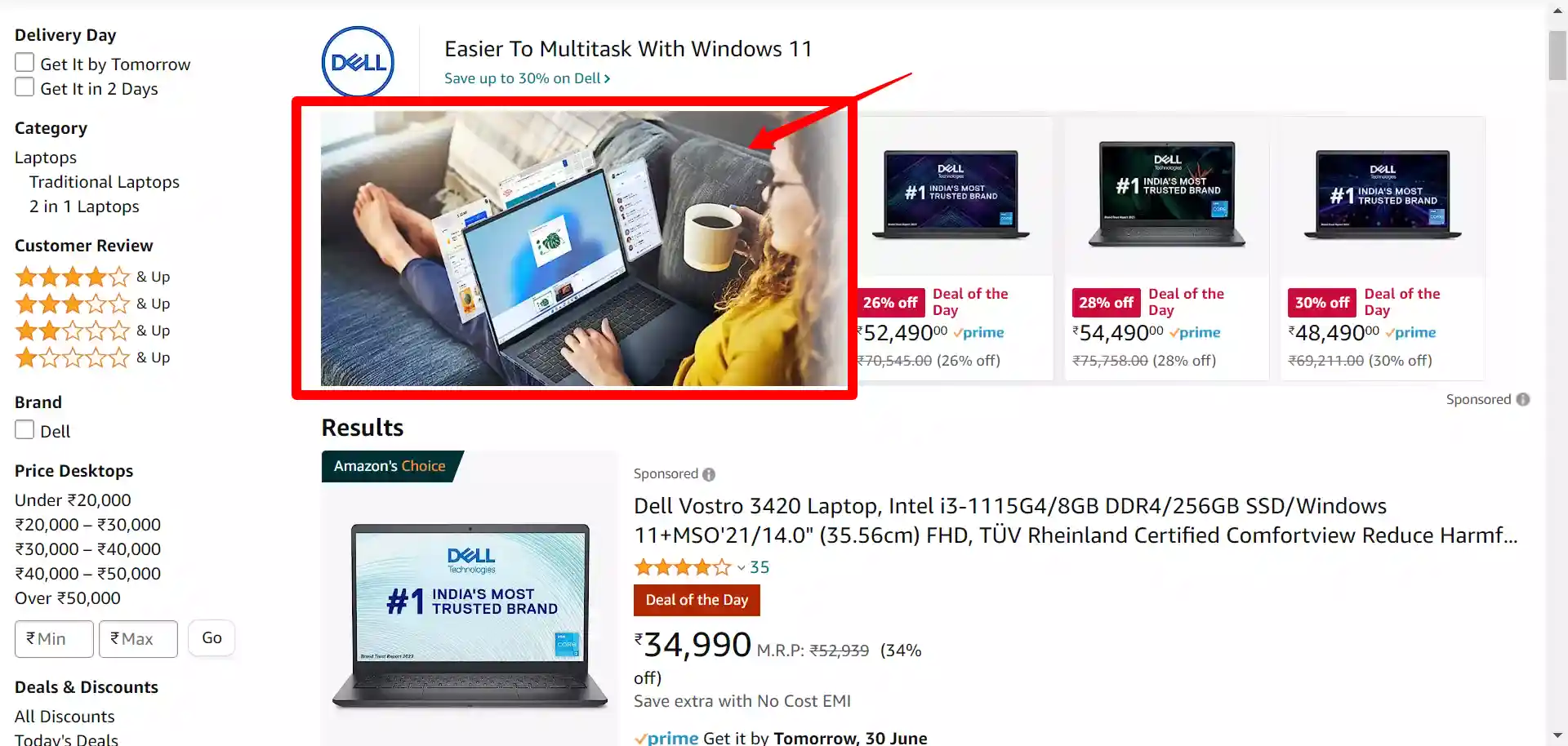
Native ads on Amazon are similar to contextual ads on Google AdSense, as they show relevant ads based on the product page where ads are displayed. Once the ad codes are placed on your eCommerce site, it automatically scans the content of the page & displays products based on the keywords used within the site. For example, This super-subtle native ad from a Dell laptop on Amazon ticks all the boxes. It appears alongside a related product and doesn’t distract the user’s shopping experience. Amazon understands how to persuade customers to spend more. Smart move!
Squarespace ad on Unsplash homepage
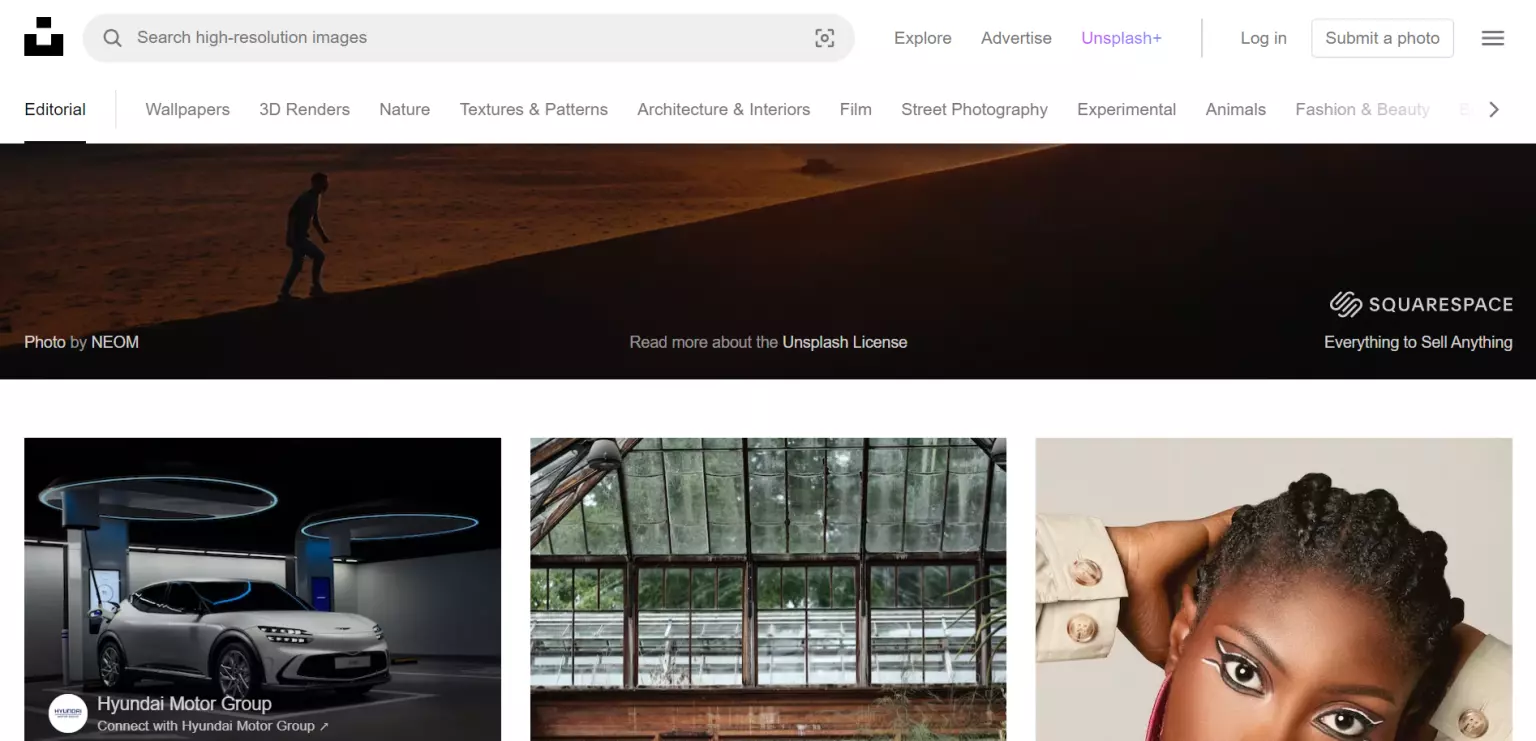
Unsplash is well-known for its interesting and beautiful imagery, ranging from creative to trending and business images. So, online photo community ads with more intrusive experience would not be a good option. The non-obtrusive native ads this is the type of Unsplash users expect. That’s why they’ve integrated ads on their homepage almost unnoticeably, and you can see Squarespace’s logo and tagline on the Unsplash homepage. The ad experience is not intrusive at all. The ad placement is also handled correctly and does not appear excessive or wrongly placed on the homepage.
Finally, the ad looks elegant, resulting in a reader-friendly experience, and also drives a little more extra revenue opportunity for Unsplash and Squarespace every day.
Basic Types of Native Advertising
The basic types of native ads are search, display, and video ads.
Native search ads
The ads listing or promoted ad list on the top or side of the search engine results are called native search ads.
Native display ads
Native ads containing images, gifs, and text displayed on the content sites are called native display ads.
Native video ads
Native video ads contain video to register the brand message across the audiences. You can see native video ads mostly on the social network sites like Facebook pages and promotions on Twitter.
Types of Native Ad Formats
Publishers would never fall short of options regarding the types and formats of native advertising.
Fusing promotional content with the user’s browsing experience fosters heightened engagement, amplified click-through rates, and a more favorable brand perception.
In short, publishers can utilize several types or formats to integrate promotional content into the user experience seamlessly. Here are some:
In-feed native ads
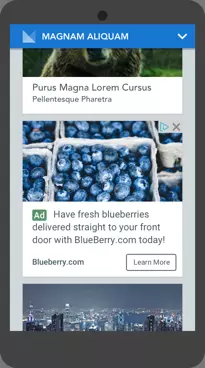
Image Source: Google AdSense
These ads appear within a website or platform’s natural feed or content stream. They blend with the surrounding content- website content, articles, social media feeds, or video playlists. In-feed native ads often match the design and format of the platform, making them less disruptive and more engaging for the users. To succeed with your in-feed native ads, you must first define their appearance. And what metric will you use to determine whether or not your native advertising is successful? Here are two common examples of in-feed ads.
Endemic in-feed ads
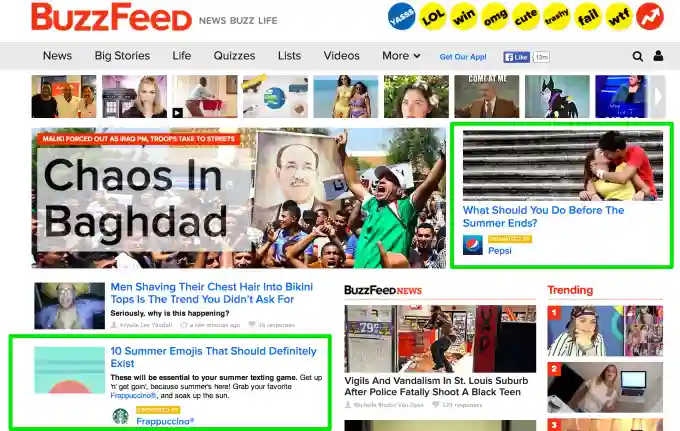
These ads are presented in a story form and match the surrounding content on the website—the links to the ad within the site of the brands being promoted like any editorial story. The ad performance is measured based on interaction and brand uplift metrics.
Linked in-feed ads
This promotional ad type has been sold with a guaranteed link placement to the site content or brand’s landing page. The CTR and conversion rate measure the ad performance.
Moreover, In-feed native ads offer a seamless user experience to your site visitors. They look like part of the website flow and match your site’s overall look and feel.
Paid search ads
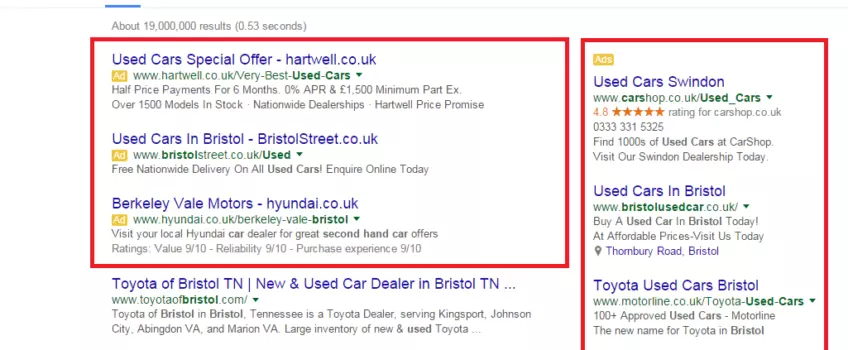
Image Source: WSI
Native advertising also appears in search engine results pages (SERPs) as paid search ads. These ads appear at the top or bottom of the search results and resemble organic listings. They typically include a small “Ad” label to indicate their promotional nature.
Sponsored ads
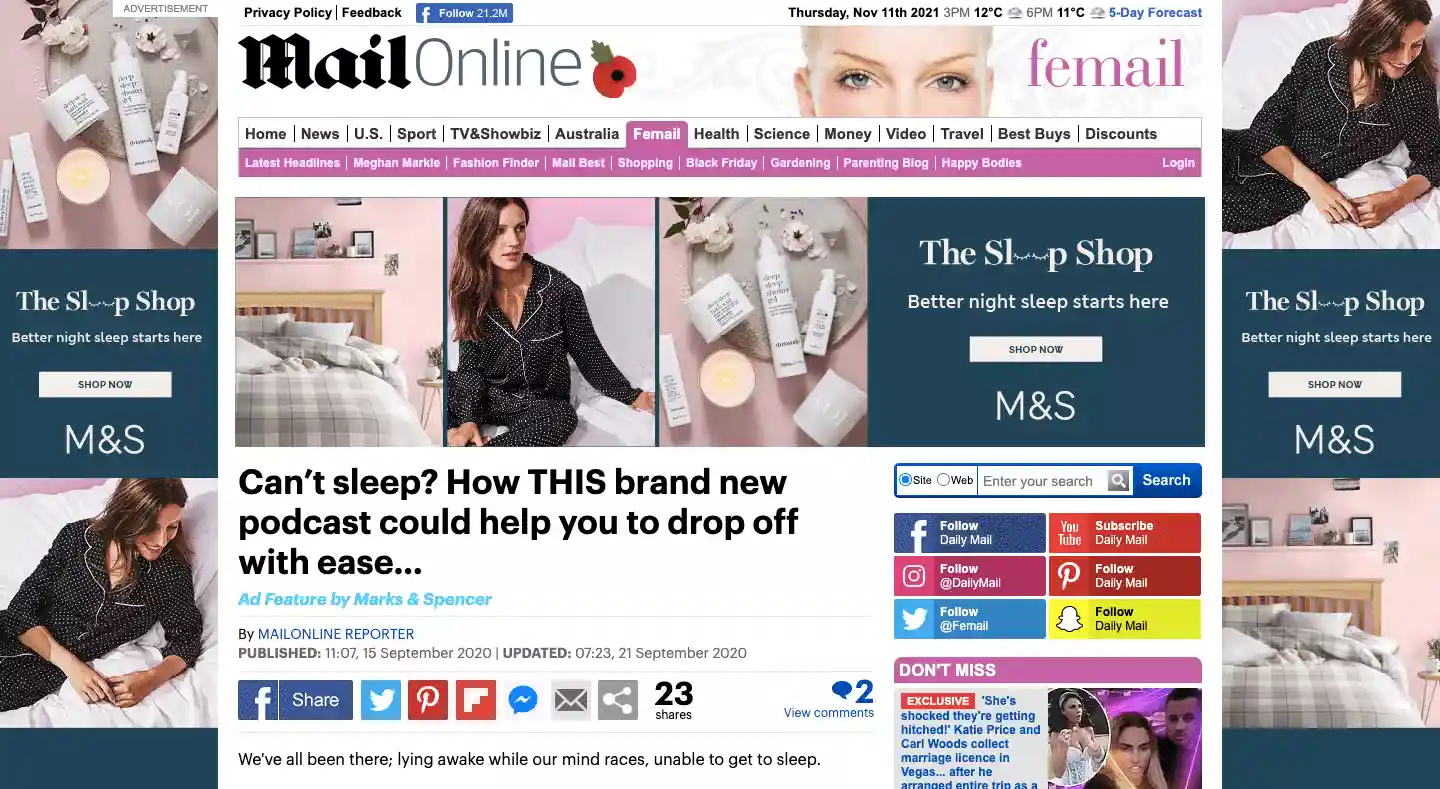
This type of native advertising involves creating high-quality, informative, and engaging content relevant to the target audience. It can take various forms, such as articles, videos, infographics, or podcasts. Sponsored content is clearly labeled as sponsored, but it also provides value to the audience while subtly promoting a brand or product.
Branded ads
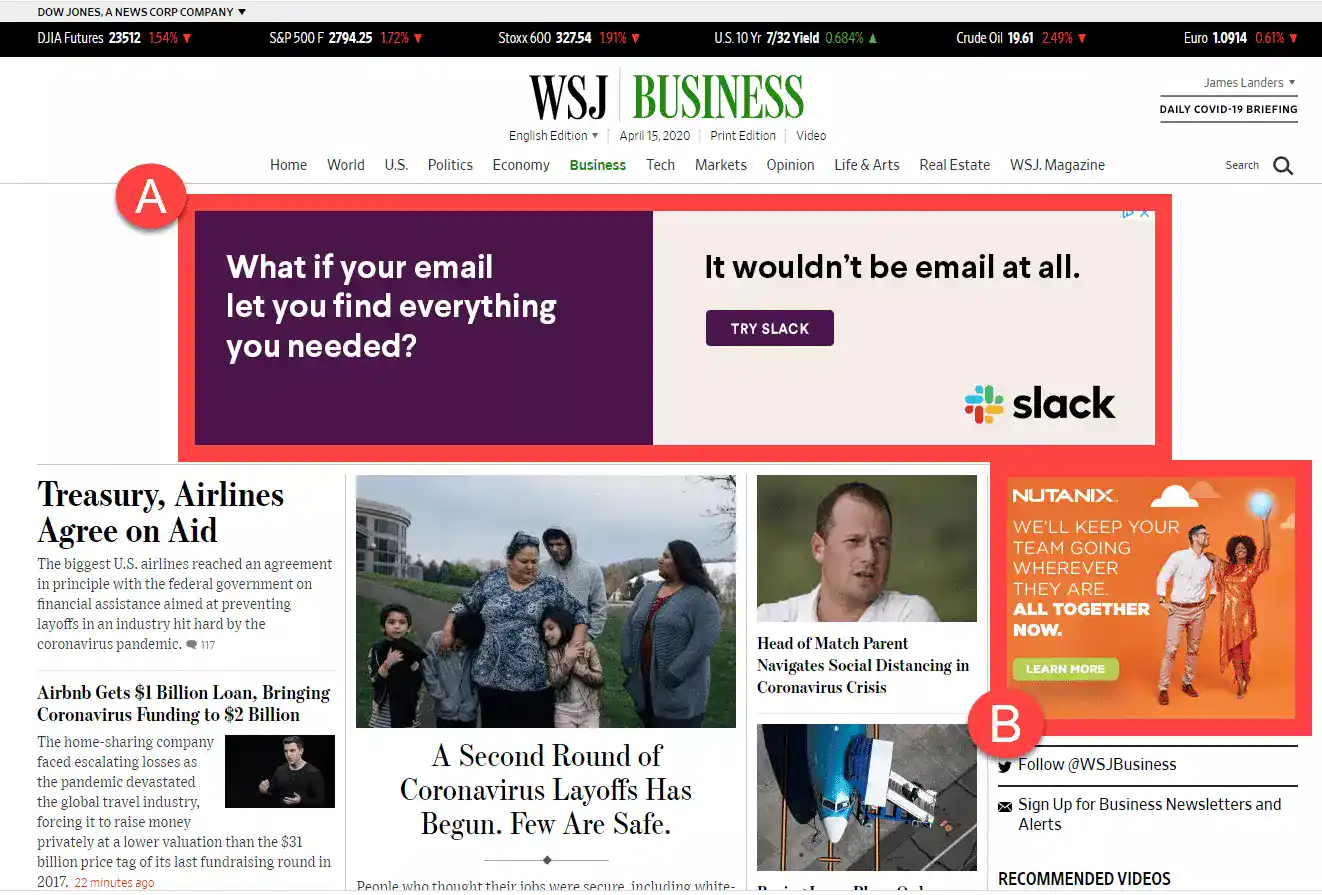
Branded content goes further by creating content that aligns closely with a brand’s values, messaging, and identity. It aims to tell a compelling story or convey a specific message while associating the brand with the content. Branded content often involves collaborations with publishers or advertisers to leverage their expertise and reach.
In-Ad native
This type of native advertising refers to ads that match the form and function of the platform on which they are displayed.
For example, a native mobile app ad may mimic the app’s design and interactivity. In-ad native ads provide a seamless experience and blend seamlessly with the app or website’s interface.
Custom native ads

Image Source: MV3marketing
These are highly customized native ads created specifically for a platform or website. Custom native ads consider the platform’s unique design, format, and user experience to ensure perfect integration. Custom Ads has the element of easy customization that gives it an edge over the other formats. The ad allows for a smooth transition from content to ad that will produce the best visitor experience.
Native Advertising Benefits for Publishers
Native advertising offers several benefits for publishers incorporating it into their content strategy.
Let’s have a look at some of the benefits:
Improves user experience: Native ads blend seamlessly with the surrounding content, creating a more cohesive and less intrusive user experience. Unlike traditional display ads, which can be visually disruptive, native ads follow a more natural and integrated approach. This approach leads to increased user engagement and satisfaction.
Enhances relevance and context: These ads perfectly match the interests and preferences of the publisher’s audience. By integrating ads that align with the content already being consumed, publishers ensure that the ads are relevant and valuable to their users. This relevancy plays a crucial role in maintaining the trust and loyalty of the audience.
Engagement and click-through rates: Native ads have surpassed traditional display ads regarding engagement metrics. The smooth integration and contextual alignment of native ads make them more enticing to users, resulting in higher click-through rates and longer interaction duration. This heightened engagement positively impacts the publisher’s metrics and ad performance.
Diversifies the ad inventory: Publishers have a fantastic opportunity to expand their ad inventory and cater to diverse advertiser needs through native advertising options. This flexibility opens doors to a broader range of potential advertisers, paving the way for establishing long-term partnerships and collaborations.
Potential for sponsored content collaborations: Native advertising offers a gateway to forge partnerships for sponsored content endeavors. Publishers can collaborate with brands to craft sponsored articles, videos, and various content formats that deeply connect with their audience. These collaborations yield revenue and unlock prospects for imaginative storytelling and active audience participation.
Adaptable to various platforms: Native advertising offers immense flexibility and seamlessly integrates into diverse platforms like websites, social media feeds, mobile apps, and beyond.
This remarkable adaptability empowers publishers to harness the potential of native ads across multiple channels, effectively connecting with their target audiences wherever they engage with content.
Hence, publishers can use native ads to capitalize on their platform, expanding their monetization possibilities beyond conventional display ads or subscriptions.
Google Ad Manager Native Ads – Setup and Implementation
Native Ads Best Practices for Effective Monetization
To learn how to use native ads for more clicks, you must first consider several crucial elements. Let’s take a look at some essential guidelines to bear in mind:
Focus on quality over quantity: Try placing less quantity of ads. However, also focus on displaying high-quality and relevant ads to get user attention. Personalized ads are preferable. You also need to ensure that it doesn’t harm the UX. So, you can get more demand and high CPMs for your native ad space.
For publishers that run ads in the US or your targeted audience/advertisers are US companies, we recommend that you familiarise yourself with the Federal Trade Commission (FTC) guidelines for native advertising.
Optimizing native ads for better performance: Optimize your native ads with automation tools that allow publishers to schedule changes and see the results in real time. Consistently experiment and enhance the performance of your native ads through rigorous testing.
Take advantage of A/B testing by creating various iterations of headlines, visuals, CTAs, ad placement, or content formats to determine the most effective elements that truly connect with your audience.
For instance, written content, write-ups, and sponsored articles are ideal forms for content writing. You can come out of those cliche habits and try video, audio, and rich media content formats to explore new revenue opportunities.
Do regular performance evaluation: Periodically assess the performance of native ads to gauge their effectiveness. Dive into crucial metrics like click-through rates, conversions, and engagement to know about the tactics giving high revenue, pinpoint areas that could benefit from enhancements, and find places that have gone wrong to improve it.
Utilize this valuable data to fine-tune your native ads and guide your decision-making process with data-backed insights.
Best Native Ad Networks for Publishers (2024)
Regarding native advertising networks, the key distinction lies in their ability to serve native adverts. These platforms harness advanced advertising technology to seamlessly integrate ads that blend harmoniously with the content they accompany.
Now that we’ve clearly understood native advertising and the various types of native ads let’s get familiar with some of the leading native ad platforms.
- Taboola
- Nativo
- RevContent
- MGID
- Sharethrough
- Yahoo Gemini
- Outbrain
When searching for the right native ad platform, you should consider factors such as your advertising budget, web traffic, content you serve, and the pricing model of the native ad network. Ensure you meet traffic and budget requirements to access your desired features before signing up for an ad platform.
Best Native Ad Networks for Publishers in 2024 (Complete Details + Pricing + Features)
Run Native Ads for a Win-Win Situation
Native advertising is a game-changer in the advertising landscape, bringing forth many positive outcomes. Brands have the opportunity to establish authentic connections with their target audience. Publishers reap the rewards of diversified revenue streams and heightened user satisfaction by fostering trust and loyalty.
Native advertising examples catalyze creativity and innovation, propelling the industry forward while fostering economic growth through collaborative partnerships. With a commitment to transparency and ethical practices, native advertising paves the way for a future where ad experience seamlessly integrates with the user experience, creating a win-win scenario for all stakeholders involved.
FAQs
What is the main difference between native and display advertising?
Native advertising blends in with the surrounding content, providing a more seamless and non-disruptive user experience, while display ads tend to be more visually distinct and interruptive.
What are the benefits of native advertising for publishers?
Native advertising provides publishers an additional revenue stream, enhances user experience, increases engagement, and allows for collaborations on sponsored content.
What are some of the best native advertising examples to follow in 2023?
The best native ad examples to consider in 2023 are:
- Netflix+WSJ Ad
- Mercedes “Rise of Superhuman Ad” in the Washington Post
- KPMG Ad on Forbes
- Squarespace Ad on Unsplash Homepage
- Visit Portugal Native Ad on Skyscanner
Where can native advertising be used?
Marketers use native advertising on various platforms, including websites, social media feeds, mobile apps, search engine results pages, and more.


